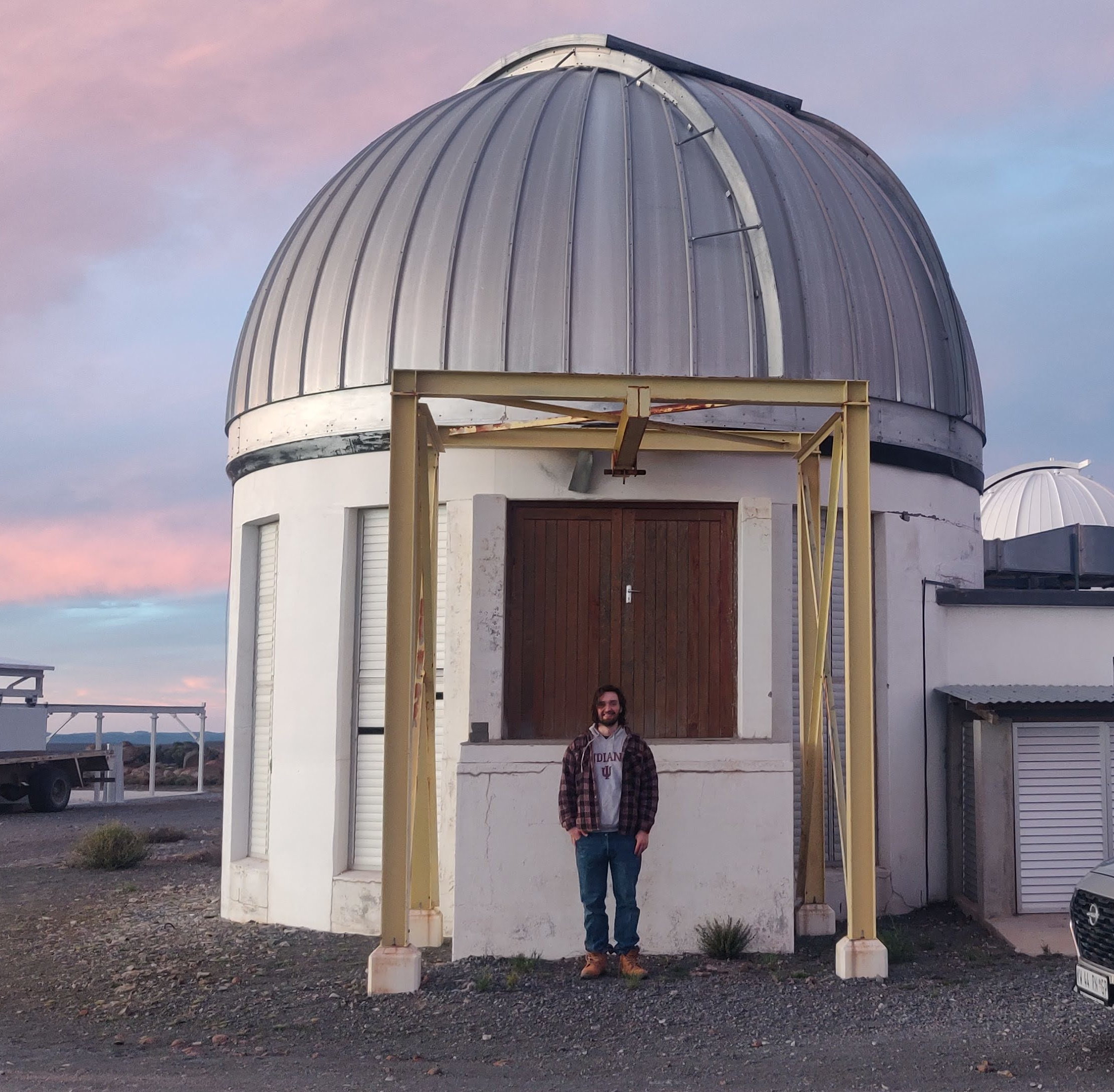
Abstract
We present a revised implementation of the MESA (Modules for Experiments in Stellar Astrophysics) custom colors module, designed to compute synthetic photometry from stellar atmosphere models. This updated module constructs spectral energy distributions (SEDs) based on fundamental MESA stellar parameters; effective temperature (Teff), surface gravity (log g), radius, and metallicity ([M/H]).
This work was completed in collaboration with Prof. Meridith Joyce, Dr. Phillip Mocz.
The ability to compute synthetic photometry directly from stellar evolution models is increasingly relevant as modern astronomical surveys, such as Gaia, JWST, LSST, and TESS, demand rigorous comparisons between theoretical predictions and observed stellar populations.
The module supports interpolation over stellar atmosphere grids to account for metallicity-dependent effects, ensuring consistency with empirical photometric data. Additionally, synthetic photometry can be directly incorporated into MESA’s stellar evolution models, improving the realism of evolutionary tracks and color-magnitude relationships.
This enhancement expands the capability of MESA in the context of stellar evolution, population synthesis, and Galactic chemical evolution modeling. Future improvements will focus on increasing the spectral resolution of underlying models, incorporating additional photometric systems, and extending the module’s applicability to a broader range of astrophysical contexts.
Operations for Synthetic Magnitude Calculation
Extract Stellar Parameters
Read the effective temperature (\(T_{\text{eff}}\)), surface gravity (\(\log g\)), radius (R), and metallicity (\([M/H]\)) from the MESA model.
Retrieve the distance (d) from the inlist defined by user.
-
Load file paths for:
- Stellar atmosphere model grid (SED files)
- Filter transmission curves
- Vega spectrum reference file
Determine whether an SED should be saved (
make_sedflag).
Construct the Stellar Spectral Energy Distribution (SED)
Load the lookup table containing SED filenames indexed by \((T_{\text{eff}}, \log g, [M/H])\).
Identify the four closest stellar models based on parameter distances.
Load and interpolate these models onto a common wavelength grid.
Compute weighted flux values to approximate the target stellar parameters.
Dilute the surface fluxes from the stellar atmosphere model to an observer at distance \(d\):
-
\[ F_{\text{obs}} = F_{\text{surface}} \times \left(\frac{R}{d}\right)^2 \]
Compute Bolometric Quantities
-
Perform trapezoidal integration over the SED to obtain:
Bolometric flux: \[ F_{\text{bol}} = \int_{\lambda} F_{\lambda} d\lambda \]
-
Bolometric magnitude: \[ M_{\text{bol}} = -2.5 \log_{10}(F_{\text{bol}}) \]
Read Filter Transmission Curves
Load the list of filter files specified in the input.
For each filter, read the wavelength-dependent transmission curve.
Convolve the SED with the Filter Transmission Curve
Interpolate the filter transmission onto the SED’s wavelength grid.
-
Compute the convolved flux:
\[ F_{\text{conv}}(\lambda) = F_{\text{SED}}(\lambda) \times T_{\text{filter}}(\lambda) \]
Compute Synthetic Flux for the Filter
-
Integrate the convolved flux using Simpson’s rule:
\[ F_{\text{syn}} = \frac{\int_{\lambda} F_{\text{conv}}(\lambda) \lambda d\lambda}{\int_{\lambda} T_{\text{filter}}(\lambda) \lambda d\lambda} \]
Compute the Vega Zero-Point Flux for the Filter
Load the Vega spectrum from the reference file.
Convolve it with the same filter.
-
Compute the Vega synthetic flux:
\[ F_{\text{Vega}} = \frac{\int_{\lambda} F_{\text{Vega}}(\lambda) T_{\text{filter}}(\lambda) \lambda d\lambda}{\int_{\lambda} T_{\text{filter}}(\lambda) \lambda d\lambda} \]
If requested, save the convolved Vega spectrum for debugging.
Compute the Final Synthetic Magnitude
-
Use the Vega magnitude system:
\[ m = -2.5 \log_{10} \left(\frac{F_{\text{syn}}}{F_{\text{Vega}}} \right) \]
If Vega flux is zero, return an error.
Optional: Save Additional Data
-
If
make_sedis enabled, save:- The SED convolved with each filter (as CSV files).
- The raw Vega SED convolved with the filter.
Download:
Setting Up Your MESA Module
After cloning the GitHub repository, ensure that your MESA environment is correctly configured...
Prerequisites
- MESA installation
- Matching SDK Version
- Set up environment variables
- For far better instructions, check out Rich Townsend's mad star Website
export MESA_DIR=/path/to/mesa
export MESASDK_ROOT=/path/to/mesasdk
source $MESASDK_ROOT/bin/mesasdk_init.sh
source ~/.bashrc # or source ~/.zshrcCloning and Building the Module
git clone https://github.com/nialljmiller/MESA_custom_colours.git
cd MESA_custom_colours
./clean
./mk
./rnThe ./mk command will download testdata.txz and extract the Kurucz2003 model along with Gaia and JWST filter transmission curves.